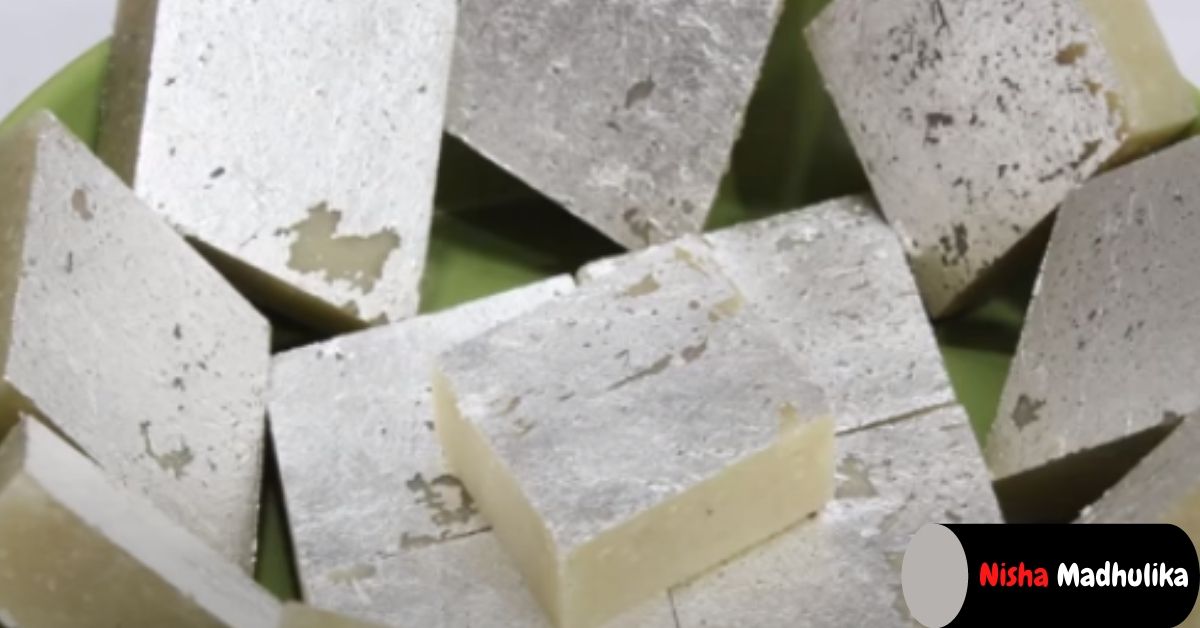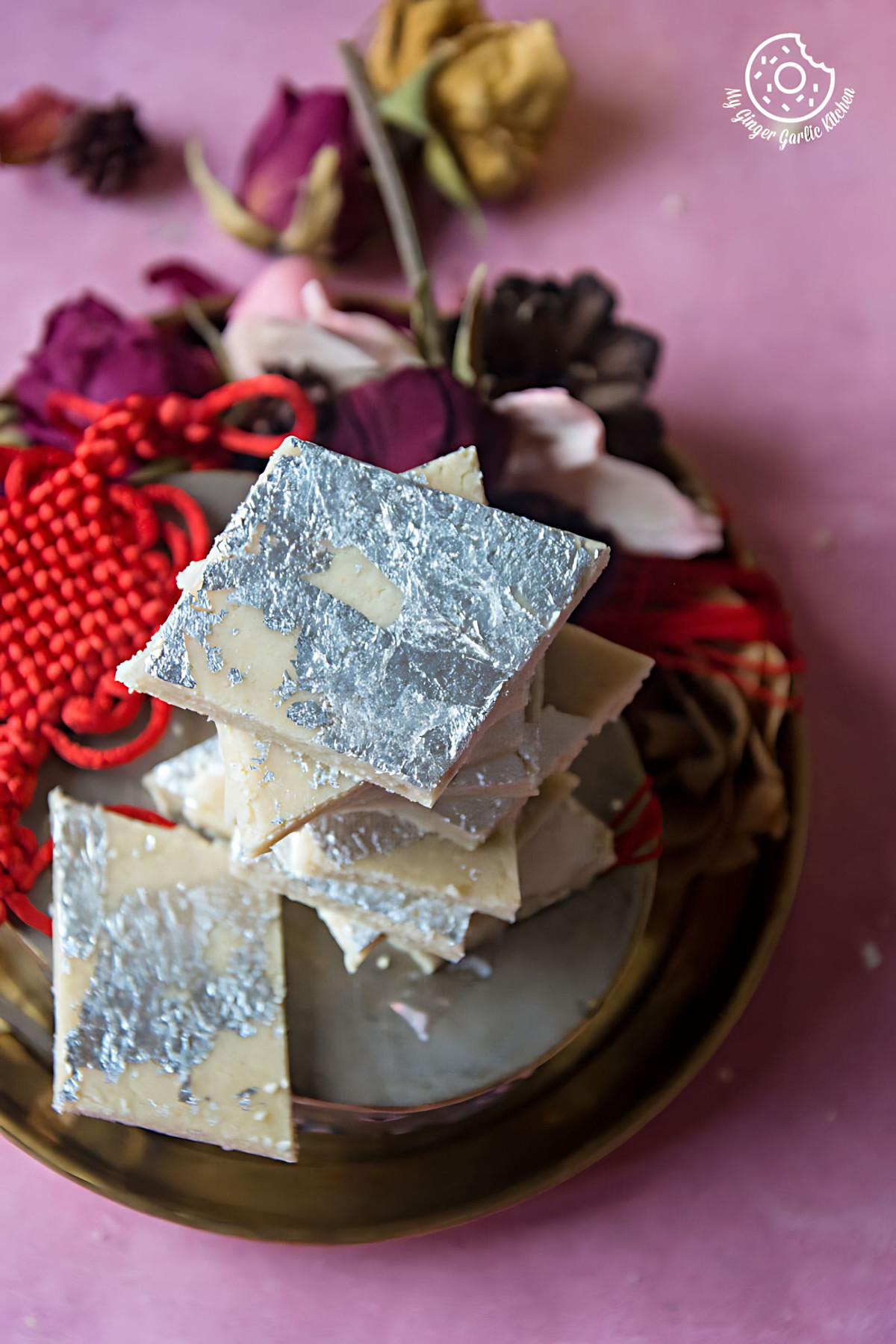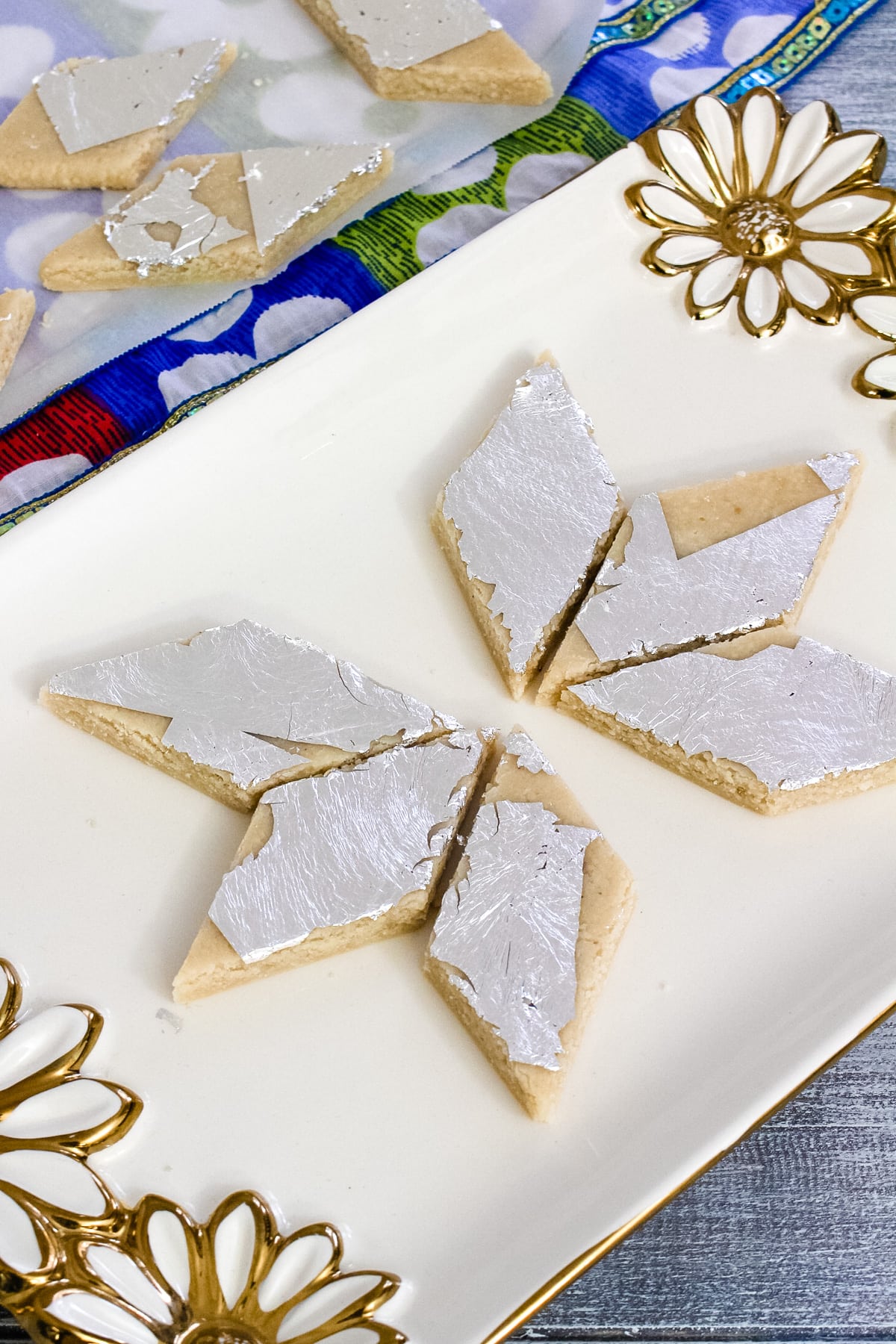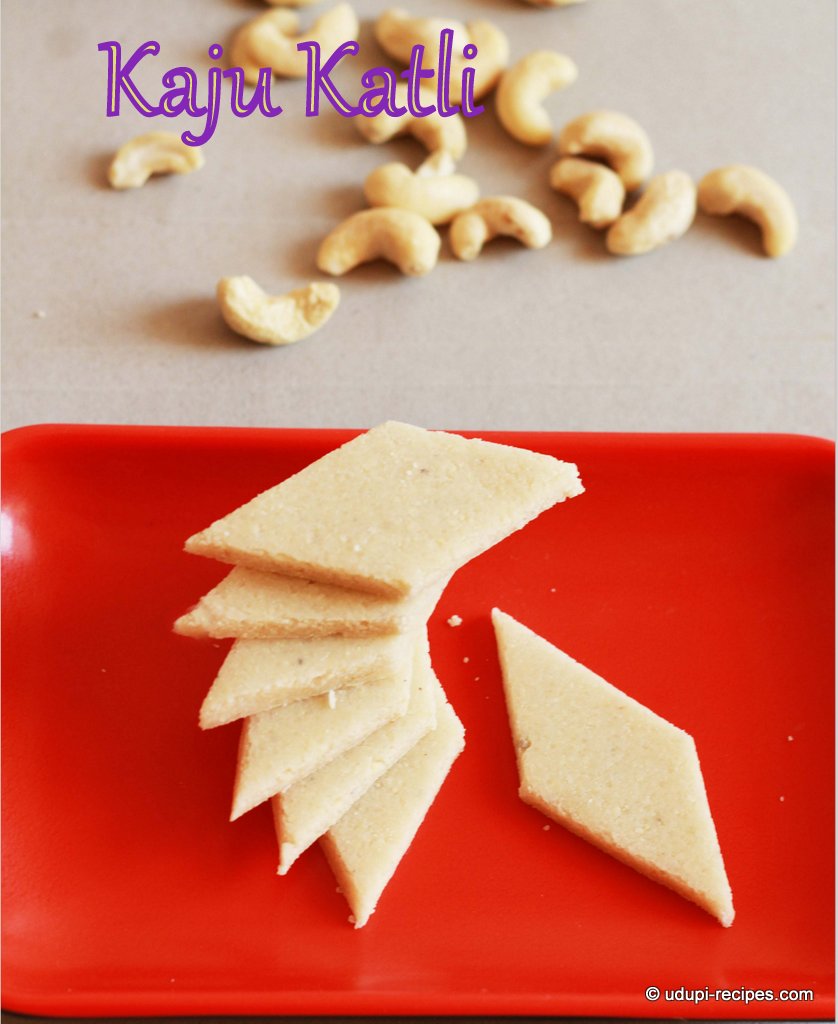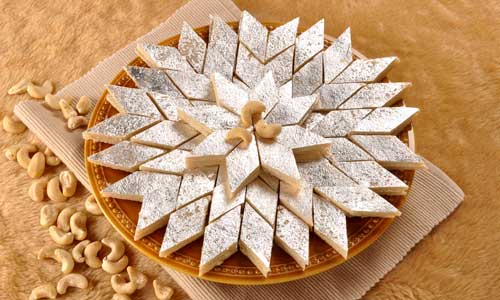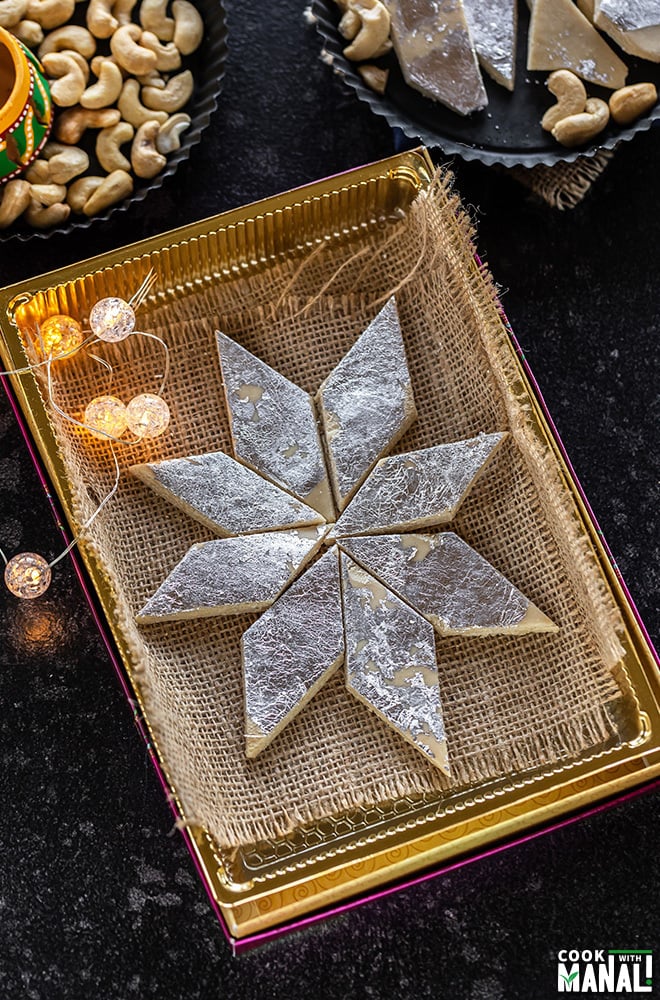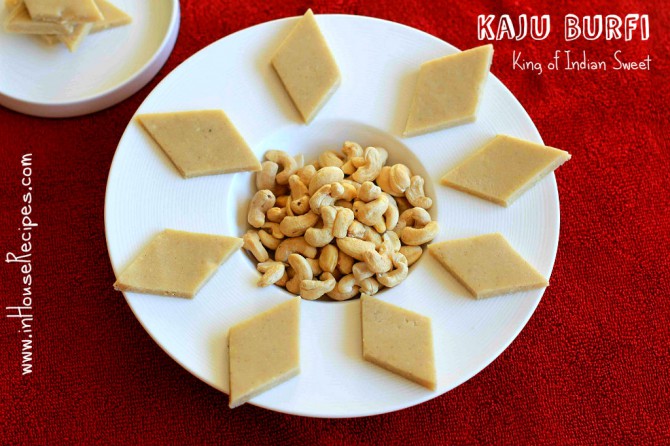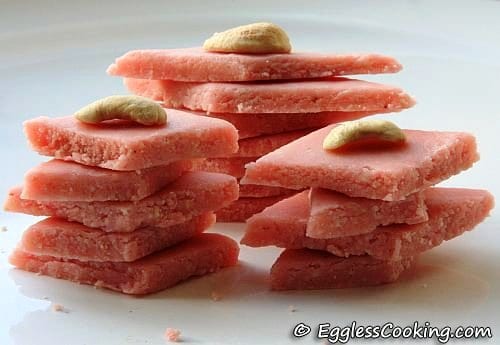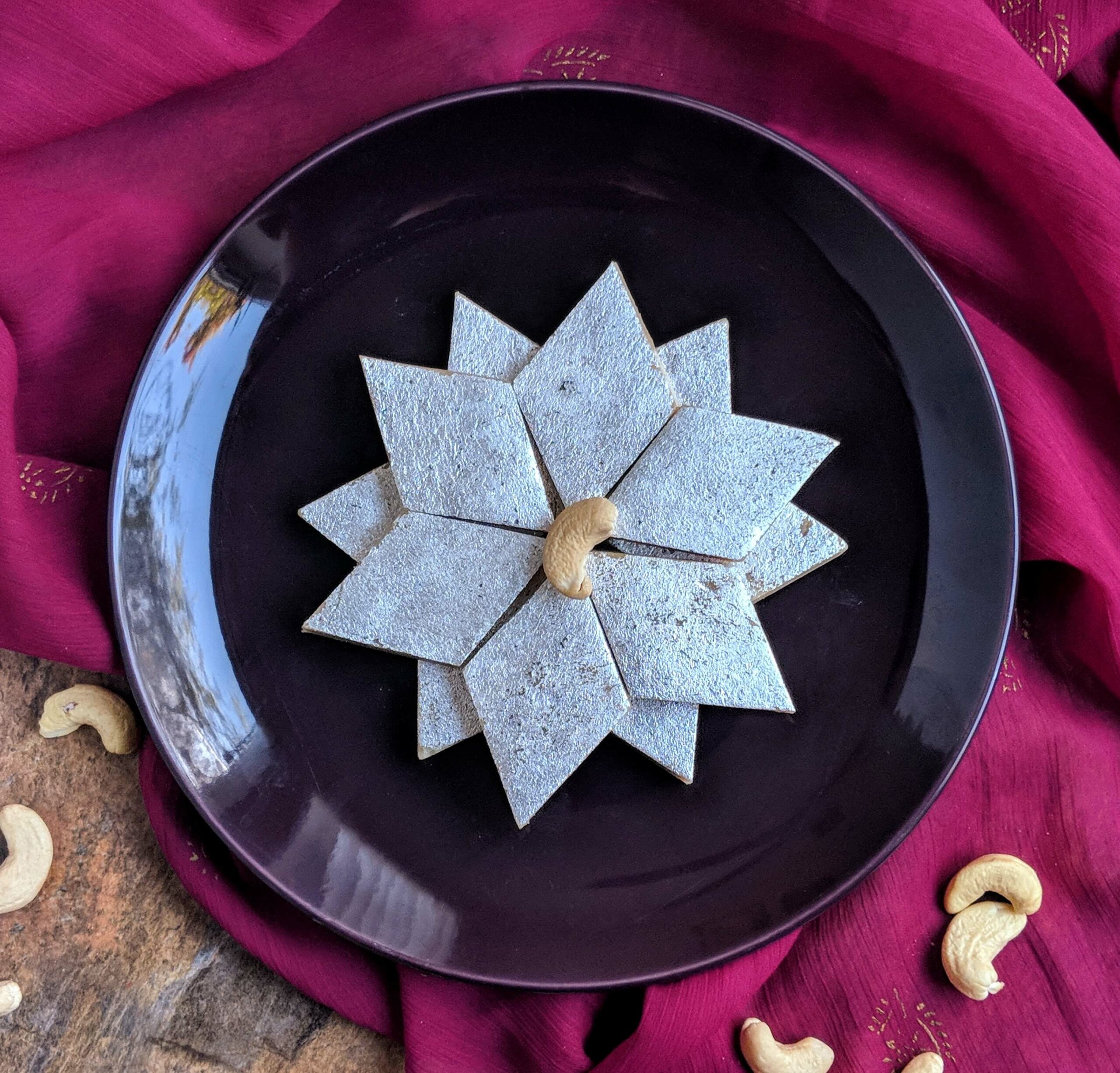Kaju katli
kaju katlii, kaju burfi, kaju barfi
Kaju katli is an Indian dessert. Kaju means cashew; barfi is often made by thickening milk with sugar and other ingredients (such as dry fruits and mild spices). Kesar kaju katli includes saffron. It is similar to barfi, but unlike barfi, it typically contains no milk. The dish is prepared with cashew nuts soaked in water for a considerable period of time (usually overnight), which are then ground to a paste. Sugar solution is boiled down until a single thread forms when two fingers are dipped into it and pulled apart, after which it is added to the ground cashews. Ghee, saffron (kesar), and dried fruits may also be added. The paste is then spread and flattened in a shallow, flat-bottomed dish and cut into bite-sized rhombus-shaped pieces. The pieces are usually decorated with edible silver foil. The finished sweet is usually white or yellow in color depending on the ingredients used for the paste and the proportions of each used. Kaju Katli is traditionally eaten during the Hindu festival of Diwali.
Source: Wikipedia
Recipes

Kaju Katli ~ Cashew Burfi Recipe - Blend with Spices

Kaju Katli Recipe (Kaju Barfi) by Archana's Kitchen
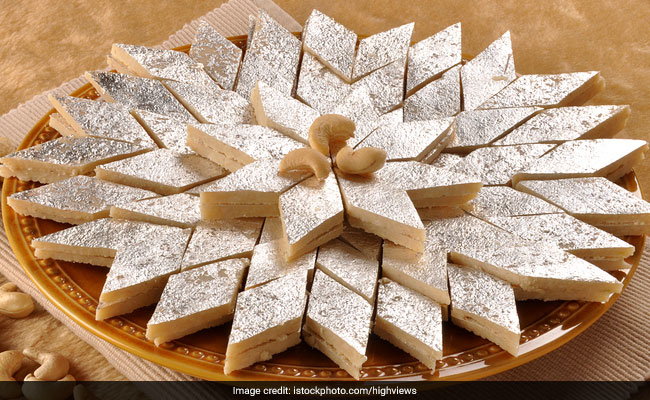
Kaju ki Barfi Recipe | How to Make Kaju Katli | Kaju Barfi

Chocolate Kaju Katli Recipe - Chocolate Kaju Barfi by Archana's Kitchen
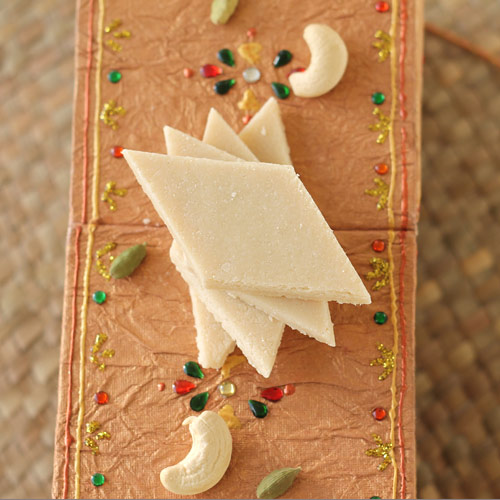
Kaju Katli Recipe with Step by Step Photos - Kaju Barfi
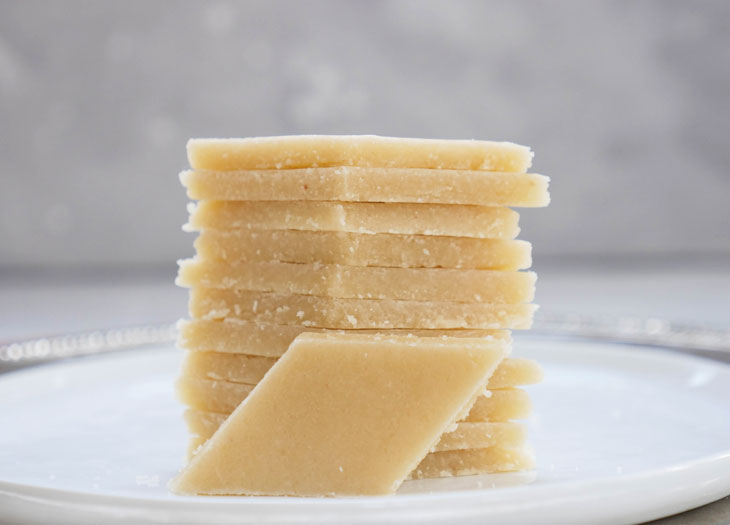
Kaju Katli Recipe Instant Pot (Cashew Fudge) | My Heart Beets
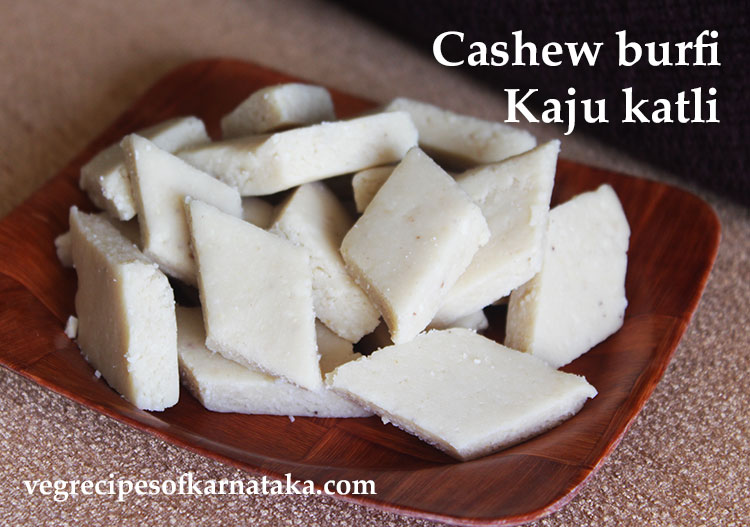
Kaju katli recipe | How to make godambi burfi | Tasty cashew barfi | Gerubeeja burfi | Kaju katri | Kaju sweets recipes

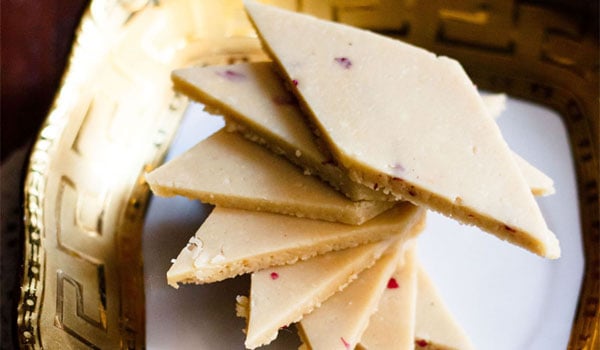

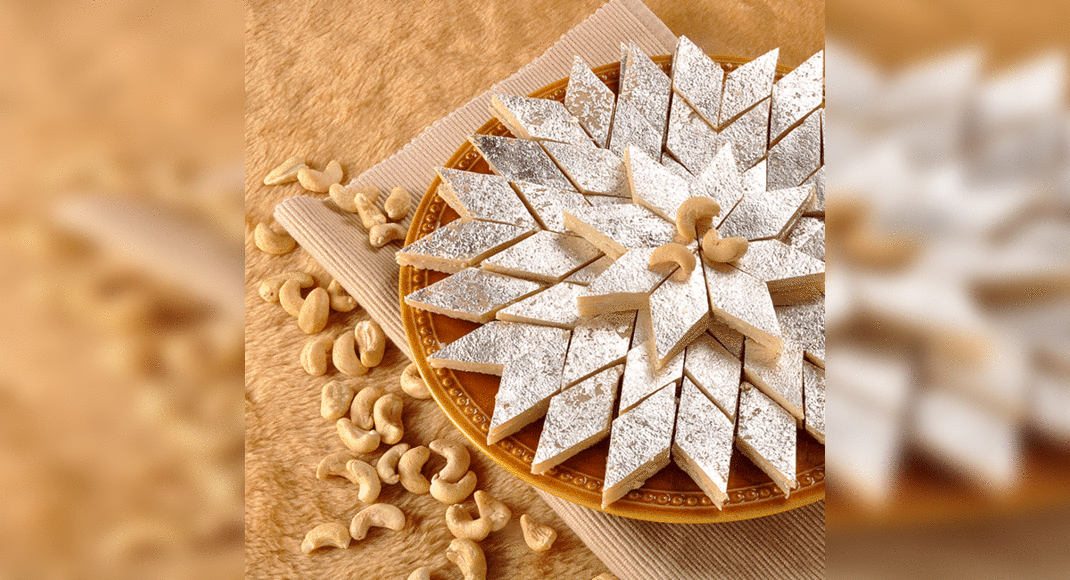
:max_bytes(150000):strip_icc()/__opt__aboutcom__coeus__resources__content_migration__serious_eats__seriouseats.com__2019__10__20191009-diwali-treats-vicky-wasik-12-Kaju-katli-1-63e426f2cf19485f95c7f80bf1ac505a.jpg)

